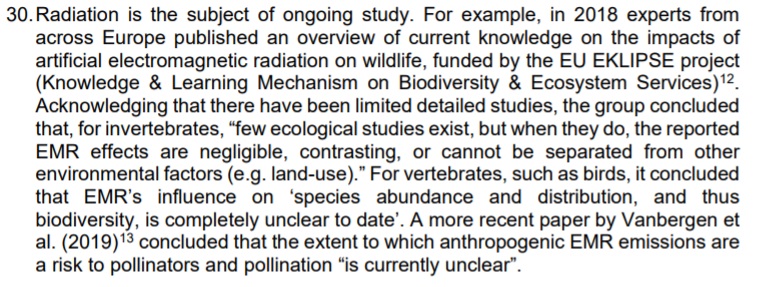July 2020
A summary of the responses to the consultation and the Government’s response
Excerpt
20.PHE is familiar with the evidence submitted to the consultation about possible risks to public health and considers that its advice, as set out below, remains unchanged.
21.PHE updated its guidance, published in October 2019, in respect of 5G in ‘5G technologies: radio waves and health’5.
PHE summarised its guidance as:
“It is possible that there may be a small increase in overall exposure to radio waves when 5G is added to an existing network or in a new area.
However, the overall exposure is expected to remain low relative to guidelines and, as such, there should be no consequences for public
health.”
22.Some 5G technology will use similar frequencies to existing communications systems. Other 5G technology will work at higher frequencies, where the main change would be less penetration of radio waves through materials.
23.Central to PHE advice is that exposure to radio waves should comply with the guidelines published by the International Commission on Non-Ionizing Radiation Protection6 (ICNIRP). In compliance with PHE advice, mobile network operators have committed to follow the ICNIRP guidelines.
Concerns raised on grounds relating to potential impacts on wildlife populations
28.Respondents also raised concerns about the effects of artificial EMF radiation on the environment, particularly on wildlife populations.
29.EMF radiation has the potential to impact the movement of insects and some species of animals. However, there is currently no evidence that human-made EMF radiation at realistic field levels has population level impacts on either animals or plants.

This document/publication is also available at www.gov.uk/mhclg
© Crown copyright, 2020
